This week's ecology trip took us on a bumpy van ride to the Chesapeake Bay Environmental Center. With 510 acres under conservation, this former cattle, tobacco, wheat, and soy farm has become a model for natural restoration and conservation methods.
Our first encounter with the native wildlife was a Terrapin crossing the road as we cruised to the parking lot. It narrowly avoided becoming turtle soup!
Our guides for the day took us to different areas of the property where different types of conservation and restoration were taking place. The first stop was this small cove, a living shore line. Previously it had been overgrown and the view from a waterfront house obscured by invasive plants. The cove was cleared of unwanted vegetation and restored to resemble a natural habitat to lure local wildlife back for nesting and spawning. Plants were chosen for their nativity and ability to control erosion: Smooth Cordgrass (Spartina alterniflora), Saltmeadow Hay (Spartina patens), and Switchgrass (Panicum virgatum). Incidentally, Saltmeadow Hay was used in the 1800's to stuff cheap mattresses and later the cushions of early automobiles.
What you can barely see in this photo is a bio-log. A what? A bio log. A log made from coconut fibers. Well, why not use a regular log, you ask? And what is the log for anyway? You've come to the right place because I'm going to tell you! Coir products have been used in the landscape industry for erosion control for eons. You've probably seen jute or coir blankets on slopes that have been recently graded or seeded to keep the soil from sliding down to the bottom until the planting takes hold. The logs do the same job only better where revegetating areas next to a shore line is concerned. The logs are made from compressed coir fibers in a tubular mesh netting and will biodegrade in 4 years or so. In the meantime, they keep the sandy soil from washing away with the tide and since they're a natural product, they provide a bit of organic matter to the site. The logs are made in Sri Lanka and we were told that a recent visitor from India who was studying the Center's methods inquired as to where he might be able to procure the logs, and was surprised to learn they were being produced in his own backyard! Small world, eh?
Way out in the bay there's also a man-made oyster bar and and artificial reef made from the recycled rubble of the Memorial Stadium demolition. The project was done wholistically, meaning the shore line, oyster bar, and reef were tackled simultaneously, not piecemeal. The project was completed in 2002. The following year Hurricane Isabel hit. After clean up, the area has been allowed to 'go native' insofar as the grasses that were planted were allowed to grow and the returning wildlife have imported seed from other native plants that have since established. All the plants installed by man were planted by hand, namely lots of school children and volunteers. The oyster bar was seeded with 7-million oysters. Interesting thing about our little mollusk friends - besides making a tasty Valentine's Day hors d'œuvre or spitting out pearls, they filter between 100-150 gallons of water a day. The current population is only about 1% of historic numbers due to pollution, fishing, etc., so improving water quality is a big deal when it comes to reestablishing the oyster population.
Even with all the native plants, invasives still, uh, invade. The mighty Phragmites is one such invader, colonizing and choking waterways far and wide. This pugnacious perennial can travel up to 1/4 mile, seeking out and destroying native habitat. The most effective control measures involve fire and lots of digging. The Center has tackled it with a combined strategy of burning and spraying with an aquatic safe herbicide with an enzyme that is specific to eradicating the weed. Stands of Phragmites claimed 10 acres of shoreline from one of the Center's fresh water lakes. Once the Phragmites was beaten back, the lake rebounded to 22 acres. One of the Center's goals is to educate waterfront homeowners about what they can do to help restore the bay, like retrofitting their septic system with a filter that can capture up to 90% of the nitrogen produced by a home septic system. Less nitrogen being dumped in the water means fewer of those algae blooms we keep reading about, and less harm to the fish and other organisms in the bay and ocean.
This area of marsh grass was very cool - acres of tide marsh pock-marked with brackish pools. A boardwalk led across the marsh to a look-out deck then continued to the shore.
This was my first encounter with a horseshoe crab. Being dead didn't lessen its formidable appearance. This is another ocean dweller whose numbers are declining from being overharvested. This one is female and measured over a foot long. Her male companion is in the background and is less than half her size.
Here she is with a blue crab shell for scale. Turns out these guys are good for measuring the quality of the ocean water. A compound made from the crab's blood can be used to measure bacteria and toxins in the water.
Another shoreline plant oddity is this squiggly mess. It's Salicornia, otherwise known as Glasswort. It's a succulent salt marsh dweller that is also edible. Supposedly it's delicious sauteed in butter and olive oil. Eaten raw, it tastes remarkably like ocean. Butterfly larvae like it, too, making it a valuable wildlife food source. Why the name Glasswort? Boy, you're just full of questions today, aren't you? Well, it's your lucky day - the ashes of Salicornia, Saltwort plants, and kelp were a source of sodium carbonate, used in glassmaking.
The Center's switchgrass meadow, which used to be the site of an ultralight runway (you know, those little one-seater airplane jobbers that are used to lead flocks of geese to wherever geese are supposed to go. If you saw the film Fly Away Home, you know what I'm talking about) is managed but is being allowed to undergo succession - to a point. Succession is where one plant community replaces another. It's a common natural phenomena that occurs in disturbed sites. This area is kept as a meadow by prescribed burning every three to five years. Burning controls invasive weed species while allowing the grasses to rejuvenate.
Another resident critter was this cute little snake. He happened across our path as we were walking to see the owls. Our guide told us this one must have been the offspring of a snake that lives under their office because is was smaller than the other one. Given this one measured a good 5-feet, I wasn't too worried about not getting a glimpse of mama!
As I said, we were on our way to see the owls.
It's always cool to get a peek at wildlife up close and personal - or at least as close and personal as a chain link fence will let you get - but there was also something dispiriting about seeing them confined. I couldn't help but think about the hawks soaring over the forest at Longwood and tried to imagine these magnificent birds floating through the night air. I hope they were rescued, and that their life now is better and longer than what it might have been. These enclosures were the only thing about this nature preserve that was glaringly unnatural.
Returning to our van, a few of us plucked bunches of wild grapes from the vines rampaging over the bayberry shrubs (boy, did they make you pucker!). How many field trips offer lessons in restoration techniques, a peek at oceanic wildlife habitat, and a natural snack?! The Chesapeake Bay Environmental Center gets a big thumbs up from me!
25 October 2010
Subscribe to:
Post Comments (Atom)

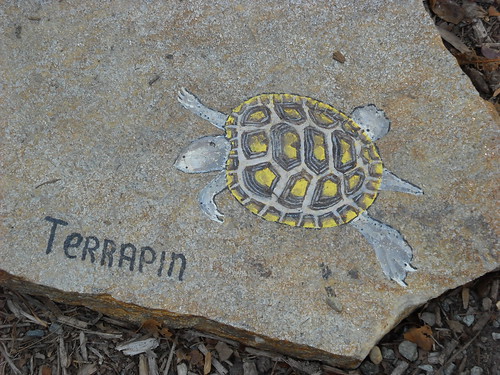

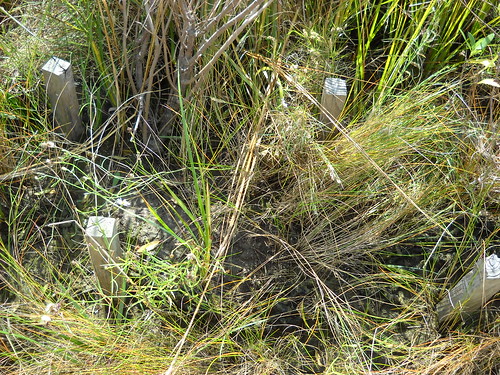
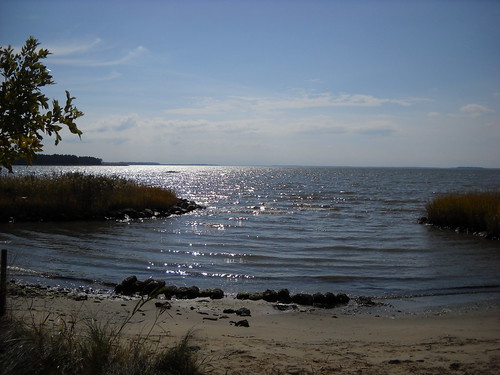
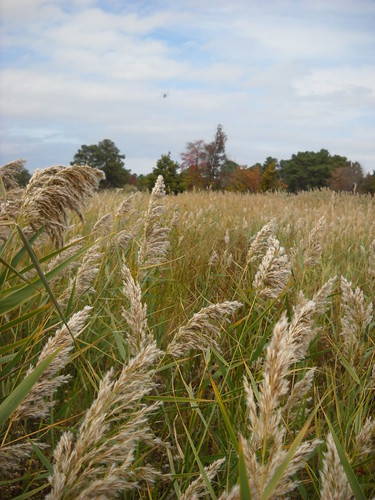

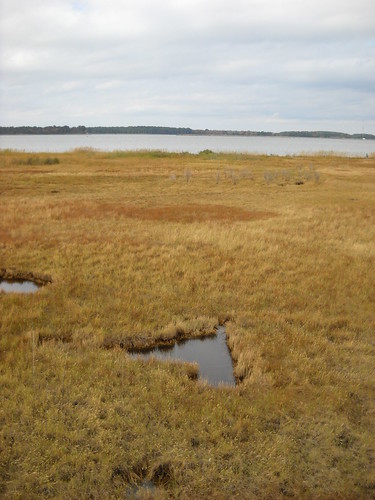
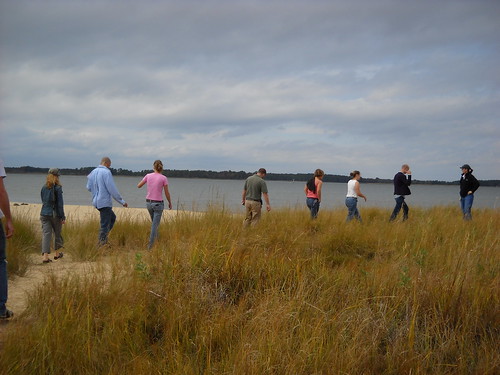
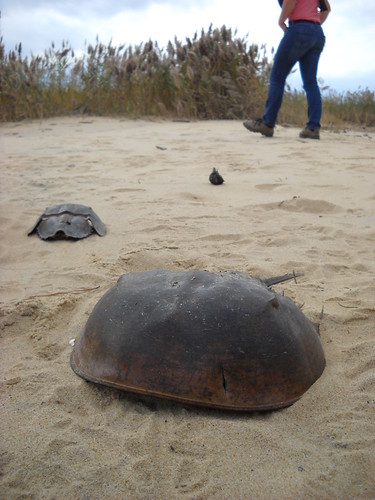
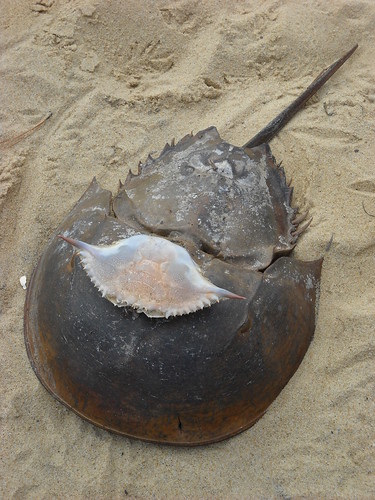
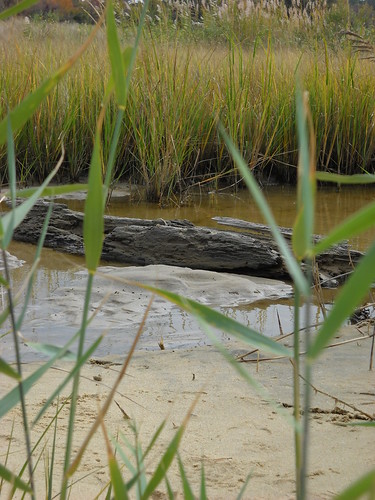
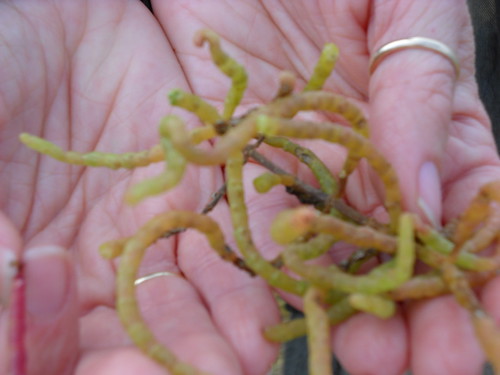

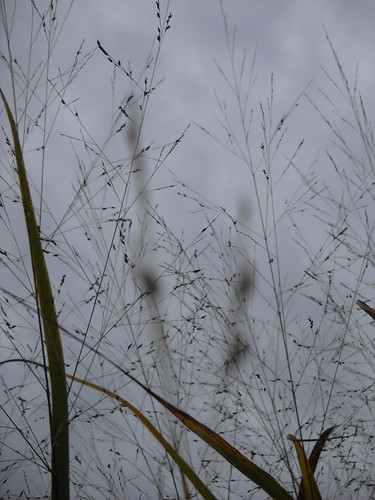
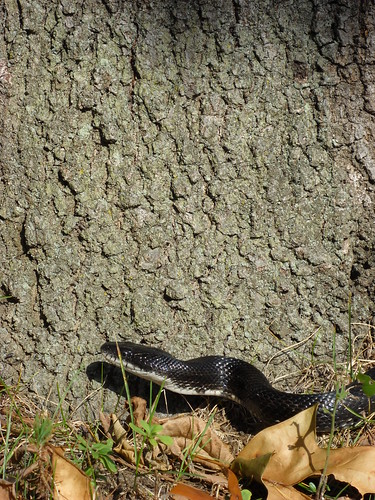
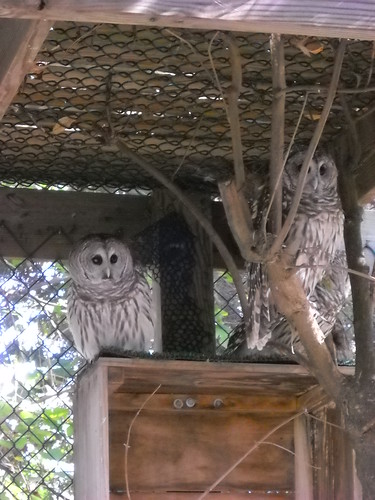
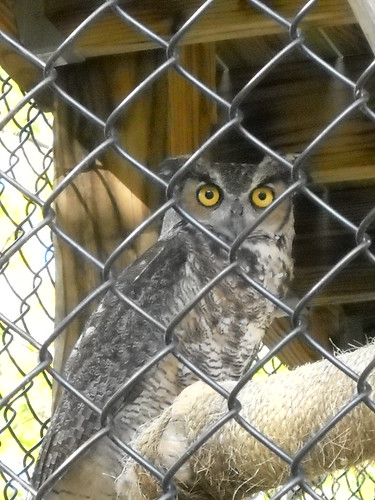





No comments:
Post a Comment